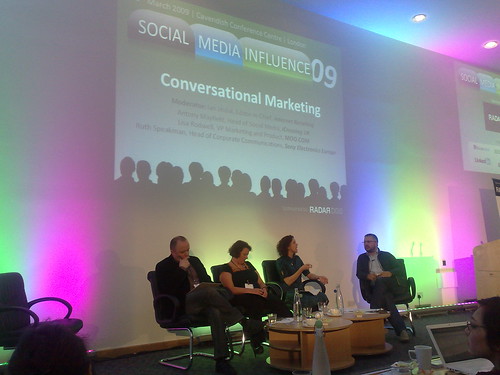My travels with a near 30-year-old camera continue: my tired but still lovely Minolta CLE from 1981-ish.
I had a great time in Paris last month with the camera on my first day, but since then I’ve put a few more films through it. The results have been variable and I have some learnings to share…
1) very fast film (high ISO numbers) has been disappointing. The 1600ASA Fuji stock I used in Brighton caused problems in scanning (bit soft) and also in the way that iPhoto displays the jpegs (seem to block and smudge, but when examined at 100% in Photoshop or Aperture, the grain was in focus and clearer, but still not great). The perfect film so far for the grey winter days has been the Fuji 800Z Professional film. I think I’m in love.
Here’s a shot from the Brighton shots to show the grain, colour ‘bloom’ and general lack of punch:

If I’m being kind I can see that the lens is resolving well enough, but straight from the scanner it’s lacking some of the kapow and oomph that the Paris set had.
2) Older Leica lenses aren’t all they’re cracked up to be. The shot above was with an old Leica 28mm Elmarit-M 2.8. Not a bad lens in anyone’s bag, but lacks the contrasty punch of the 40mm f2 Rokkor that comes as standard with the CLE. I really wanted it to be brilliant (especially since I’d swapped an Xpan body for it!) but it just didn’t do it for me. Annoyingly, the amount of Aperture-twiddling I needed to do to in post-production rather spoils the point of dev&scan.
3) The new Leica aspherical is just lovely.

This is from the Regents Park set: Fuji160 film and the 28mm Elmarit-M 2.8 ASPH. It’s a dinky, wee little thing and it’s brought back the ‘punch’ and contrast. Look at this image at the original size and you’ll see that the scanner’s managed to get more of a ‘grip’ on the negatives – you can even see the water marks on the surface of the negative. Resolving power is wonderful and the delicate handling of out-of-focus parts (eg the little boy in the sand) is just beautiful. I’m in love. Motto – always read Ken Rockwell before buying a lens! Interestingly, after the Leica rebate this lens is the same price as a 20 year old second hand inferior one and now a worthy swap for my 10yr-old Xpan.
3) My CLE over-exposes. Routinely, by about a 1/3rd to half a stop. I’m not sure whether it’s an artefact of the metering pattern (I don’t really like averaging systems – I loved the 12% weighting of the Nikon F3, and everything since then is just not quite right). I’ll run a few more films through before I commit to adjusting the ASA dial, but it’s worth knowing.
4) The absence of some features are truly a pain. Why no AE lock? Surely, simple to implement (and existed on other cameras that shared the CLE’s electronics). Also, a nice reminder in the viewfinder of having set exposure compensation would be nice… Still, not annoying enough to warrant the expense of a Leica M7 😉
5) You need to think carefully about the film stock and how you’ll use/process it. I’m taking a lazy approach, aiming for zero intervention: C41 commercial process, machine scanning, import and upload. A bit of tweaking on saturation and the black/shadow level is all I’ll do. Anything else is a) not true to the Cartier-Bresson decisive moment and b) if I’m going to mess around twiddling I might as well do a different approach!
I’m trying to settle on films that have the cool tones of Fuji film, excellent edge contrast (works best on the web) and good tonality. Fuji800Z is wining on the colour front. It may help that the lab, Panther Imaging on Clerkenwell Road, use a Fuji scanner. Then again, it may not.
B&W has been disappointing with HP5, but the Fuji Neopan 1600 was just exemplary. I slightly overexposed to capture highlight detail and then adjusted -1/3 in Aperture and couldn’t be happier. That won’t work for the summer though…
The main reason to obsess about this (apart from it being an obsession, naturally) is that you need to “know” how the image will turn out in advance. Unlike digital (where you can shoot, chimp at the screen, fiddle and reshoot), you have to see the image in your head, plan and expose – knowing the combined effect of exposure, film behaviour and standard scanning effect. That’s why it’s fun 🙂
So, I have a few trips planned in the coming weeks – to Amsterdam and Manchester – where I’ll have a couple of hours to wander the streets and take some more shots. I’ll update my impressions of the CLE and the tiny lenses, and also think I’ll be concentrating on the Fuji 800Z and HP5. Not quite sure what I’ll do once Spring is sprung – faster films will blow out the highlights pretty quickly, so I’m interested in any advice for a ‘summer film’ stock…
PPDs on Wikipedia – remembered about Postscript and felt old


